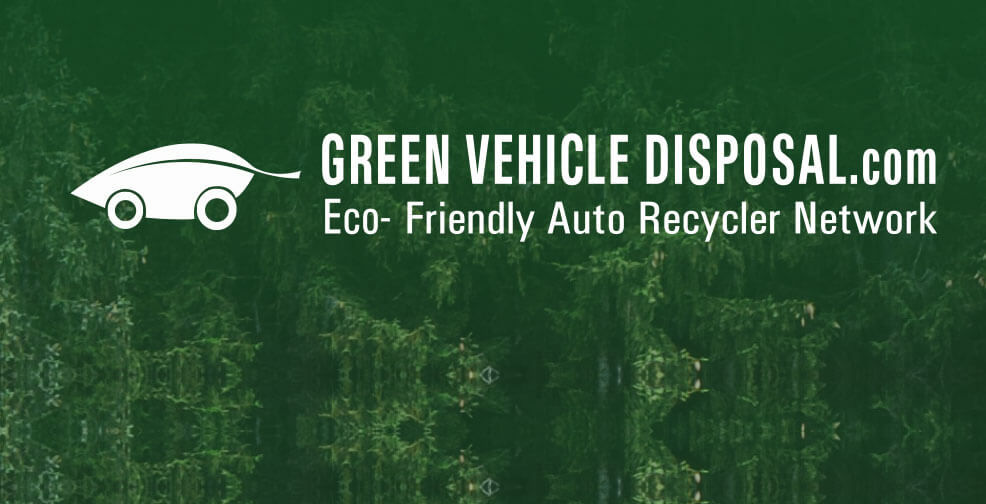To be considered “End” Of Life a vehicle must be “stripped, wrecked or otherwise inoperable due to mechanical failure.”
If your car has reached the end of the road you’re in the right place. We’ll tell you about the recycling process, show you how to search for your nearest approved sites and let you know how new environmental rules will affect you.
- Each year in North America, close to 12 million vehicles reach the end of their useful lives and are taken out of service.
- Fact: 75% of your old car can be recycled
- Fact: 42% of all new steel in this country comes from recycled metal
- Fact: Using recycled metal saves up to 74% energy and 40% water consumption. It also reduces air pollution by about 86% and water pollution by 76%
What happens to End Of Life Vehicles?
The End Of Life Vehicles that are picked up, as per your request at GreenVehicleDisposal.com or 1-877-End Of LIfe, are taken to Authorized Treatment Facilities (ATF’s) where the de-pollution takes place before dismantling or recycling occurs.
- Ferrous metals: sheet steel, steel, cast iron: 70%
- Non-Ferrous Metals: aluminum, copper and zinc: 6%
- Automotive Shredder Residue (ASR): 24%
- Therefore, 76% of the average vehicle may be recycled which leaves 24% that remains as Automotive Shredder Residue (ASR).
ASR in Ontario
Referring to estimates given by the scrap metal industry, approximately 10 million tons of steel and iron are presently recovered from End Of Life Vehicles throughout North America. Despite the vast amounts recovered, this amount easily generates 3 million tons of Automotive Shredder Residue (ASR) annually.
FACT: Of the 20 Shredder operations throughout Canada, in one Ontario facility alone, 105,000 tons of ASR is generated.
| Material | Percentage |
| Plastics polyurethane foam, polyester, polypropylene, polyvinyl chloride, styrene, polyethylene, acrylic | 15-25% |
| Inert Material gravel, sand, dirt, etc. | 15-25% |
| Paper/wood | 15-25% |
| Glass | 10-15% |
| Rubber | 10-15% |
| Moisture | 10-15% |
Source: Brett Richards, Co-Steel Recycling, Whitby, Ontario, 1999
The Composition of Automotive Shredder Residue (ASR)
Management of Automotive Shredder Residue (ASR) in Ontario:
Automotive Shredder Residue (ASR) normally ends up as landfill in Ontario as well as other geographic regions around the world.
FACT: Although Automotive Shredder Residue (ASR) is classified as non-hazardous solid waste in Ontario; sampling methods in Quebec designate such waste as hazardous.
GreenVehicleDisposal.com requires the de-pollution of a vehicle prior to dismantling to ensure proper recycling. Fluid, battery, gas tank and tire removal must take place prior to shredding. The materials listed below are typically removed by Accredited Authorized Treatment Facilities. However, many facilities do not currently drain fluids and are therefore not accredited by our network.
| Material | Handling Procedure |
| Oils and Greases (engine oil, transmission, brake, steering fluid) |
Reused by auto recycler or removed to a licensed facility. |
| Coolant, Fuel, Windshield Fluid | Reused by auto recycler or sold/given to customers. |
| Lead Acid Batteries | Either re-sold or removed from premise by a licensed recycling facility. |
| Tires | Good quality tires resold domestically or exported. Scrap tires removed from facility by service company who is licensed or are taken to licensed tire facilities. |
| CFCs, HCFCs | All air-conditioning systems are evacuated by a trained. licensed technician. Used refrigerant is sold to a licensed buyer for reuse. |
- In the United States 10-11 Million vehicles reach the end of their lives and are taken off the road every year.
- In Canada, 5 or 6 % of the entire automotive fleet is taken off the road every year, this works out roughly to between 400,000 and 500,000 vehicles yearly in Ontario alone.
- Just over two million vehicles every year, reach the end of their useful lives in the United Kingdom.
Although many of End Of Life Vehicles are picked up and are treated in an environmentally responsible manner, some do not receive the required treatment necessary to de-pollute the vehicle; therefore, it appears that End Of Life Vehicles are not managed in a consistent manner. This leads to environmental problems given the absence of regulations with regard to the proper procedure and handling of End Of Life Vehicles throughout North America. This is where GreenVehicleDisposal.com provides the solution, by outlining appropriate procedures as to the handling of End Of Life Vehicles in both Canada and the United States. Our process assures you that each End Of Life Vehicle will be de-polluted. The benefits of de- pollution are so significant that every effort needs to be made to ensure every vehicle is handled appropriately. Our facilities assure you, our customers, of this.
Who takes care of End Of Life Vehicles in North America?
We do! We ensure that End Of Life Vehicles across North America are picked up efficiently and disposed of and recycled in an environmentally sound manner.
What Can I do to help?
Call 1-877-End Of Life or visit www.GreenVehicleDisposal.com when you have a car that is no longer of any use. 75% of your car can be recycled when it reaches the end of its useful life. This aids tremendously in the recycling initiatives at a global scale as 42% of new steel comes from recycled metal. By participating, you are contributing to the environment by saving precious resources. Using recycled metal saves 74% energy and 40% water consumption. Moreover, air pollution is reduced by 86% and water pollution by 76%. Also, by ensuring your vehicle goes to an accredited Authorized Treatment Facility (ATF), you have done your part to help ensure that harmful chemicals do not get released and therefore do not contaminate the environment you inhabit.



